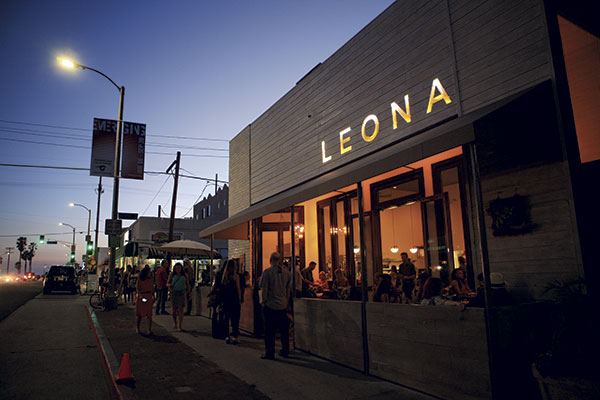Picking a color for your restaurant or branding materials? The one thing that should not drive your decision is your own opinion, be it your love for lavender or your partner’s longtime loathing for orange — so says color expert Leatrice Eiseman, author of nine books on color and consultant to a diverse array of designers and corporations on applying science and psychology to color selection. As executive director of the world-renowned Pantone Color Institute, Eiseman also helps lead the team that selects the Pantone Color of the Year, which for 2017 is Greenery 15-0343, a “refreshing and revitalizing shade that is symbolic of new beginnings.”
Color expert is a unique career choice. What led you down this path?
LE: Color has always been a love and a passion of mine. I think that anyone who’s interested in color knows from an early age that they have a talent for it. Fortunately, I was raised by a mother and aunt who allowed me the freedom to experiment with color. I could do any color that I wanted in my room, as long as I did the painting. When I got tired of it and wanted a change, I was the one who had to repaint. I eventually went on to study design, but also psychology, which is what my degree is in. I recognized the need for both disciplines — not just the aesthetic design aspect but also the psychological aspect of color. It’s hugely influential in people’s choices and the ways they want to surround themselves with color.
 Leatrice EisemanIf personal likes and dislikes shouldn’t drive color choices, what should?
Leatrice EisemanIf personal likes and dislikes shouldn’t drive color choices, what should?
LE: It starts with careful analysis of what you want your brand to be. What is your theme, your specialty, and who is your target audience? Those are the biggest things. But then there are the practical elements to consider, such as how much light will be coming into the space, how the space and design will look different going from day to night, what the mood created by the lighting will be, etc. People always want hard and fast answers or formulas for picking colors, but there really are none. The process is very brand- and concept-specific. You have to think of it in the context of many elements combined and of each particular circumstance. I also recommend doing some customer research.
Are there common color mistakes you see being made in restaurants?
LE: That’s hard to say because it is so brand-dependent. In general, it seems that more restaurants today really do understand that color is so important for creating mood and impacting appetite and comfort. The bigger mistakes I see are made in other areas, such as sound. But, of course, there are those who go with certain colors just because the owner or his or her spouse likes them.
As color trends change, how can restaurants keep their designs relevant?
LE: Most restaurants can’t afford to make wholesale color changes very often — and shouldn’t, in order to maintain brand consistency. But even if your brand colors are still working for you, you can look at color trends and think in terms of what we call tweaking colors here and there. Let’s say you have a hunter green or bottle green in a traditional restaurant that’s beginning to feel dated. It’s relatively easy to freshen the look without making a drastic change by using a newer shade of green that’s getting attention as a trend color. Even just bringing in a more current shade of a color as an accent — on china, napkins, table covers, flowers — helps to refresh the atmosphere and improve relevancy.
 The Pantone Color of the Year
The Pantone Color of the Year
What goes into selecting the Pantone Color of the Year?
LE: A lot of homework. We typically start out with a general zeitgeist or mood of what we hear being talked about, what we read, what we research, what it is that we feel people are searching for on an emotional level. So the symbology of the color is important. We also look at what’s happening with color that’s getting noticed in the worlds of art, fashion and cosmetics, and film.
As color trends change, how can restaurants keep their designs relevant?
LE: Most restaurants can’t afford to make wholesale color changes very often — and shouldn’t, in order to maintain brand consistency. But even if your brand colors are still working for you, you can look at color trends and think in terms of what we call tweaking colors here and there. Let’s say you have a hunter green or bottle green in a traditional restaurant that’s beginning to feel dated. It’s relatively easy to freshen the look without making a drastic change by using a newer shade of green that’s getting attention as a trend color. Even just bringing in a more current shade of a color as an accent — on china, napkins, table covers, flowers — helps to refresh the atmosphere and improve relevancy.



